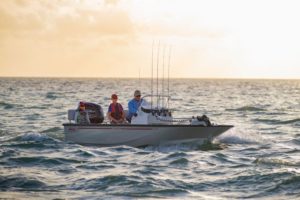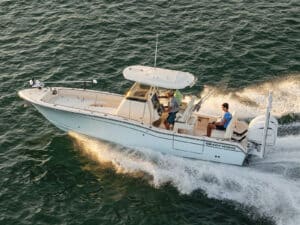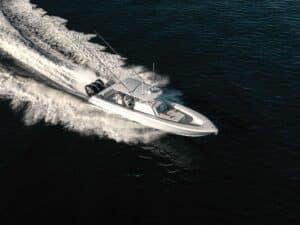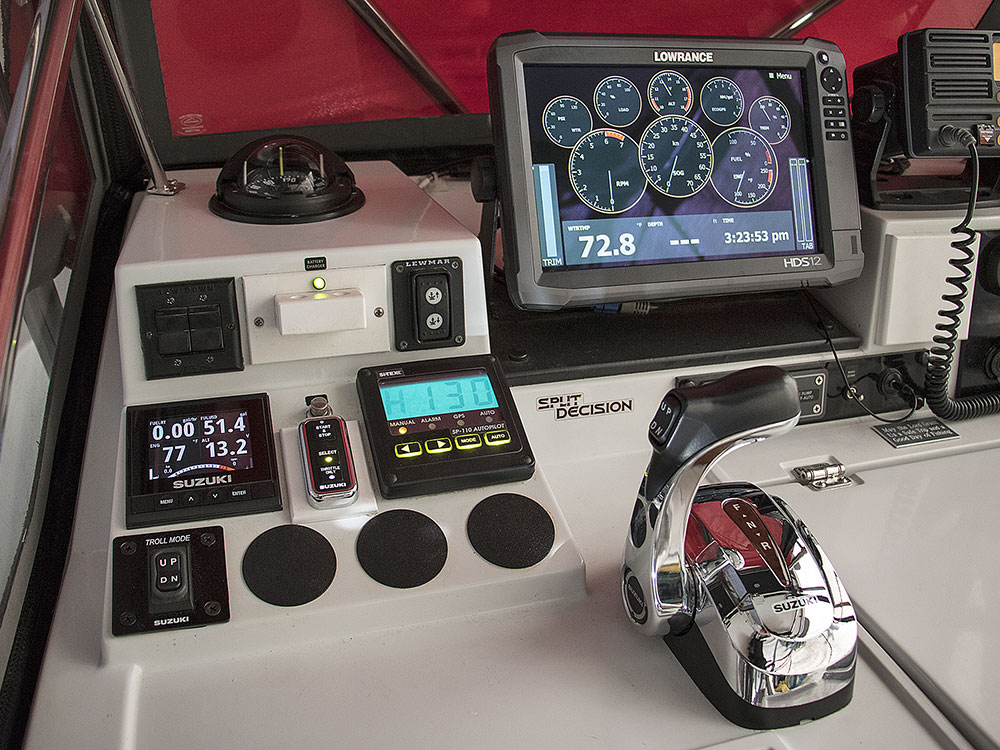
I have electronic throttle and shift controls on my boat, and I never wish to return to the good ol’ days of cable controls for my single outboard. That said, the previous system served me well for three decades. Given that cable systems still offer more-than-satisfactory performance, is an upgrade to electronic — or drive-by-wire — controls really worth it? Here are factors to help you decide.
Switching Controls
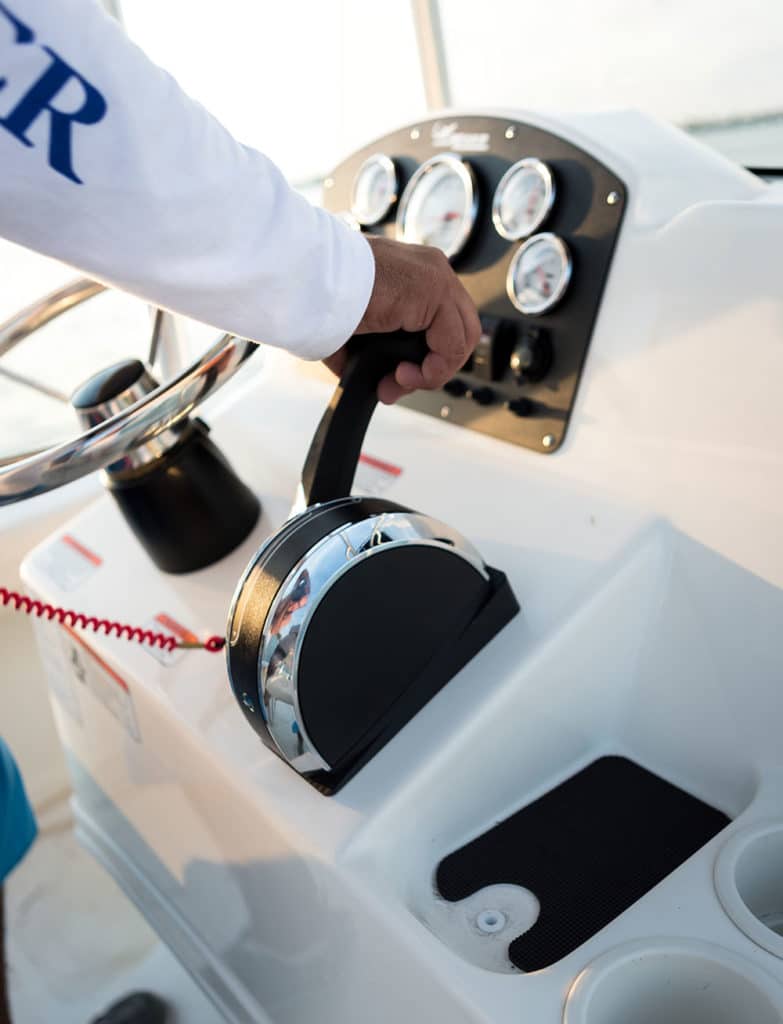
Making the switch from cable to electronic controls usually coincides with the purchase of a new boat or outboard. That’s because you can’t just add electronic controls to an older outboard. The engine must be designed and built with drive-by-wire capabilities. While nearly all new multi-outboard boats now come equipped with drive-by-wire controls, a fair number of new single outboard boats feature cables.
If you’re ordering a new boat — either through a dealer or factory direct — you will likely have the opportunity to specify the type of controls.
When re-powering an older boat, you can choose to stay with cables or upgrade to drive-by-wire, which will dictate what type of engine you buy. Outboard brands such as Yamaha offer a choice between mechanical and electronic engine controls on a number of models.
Cost Factors
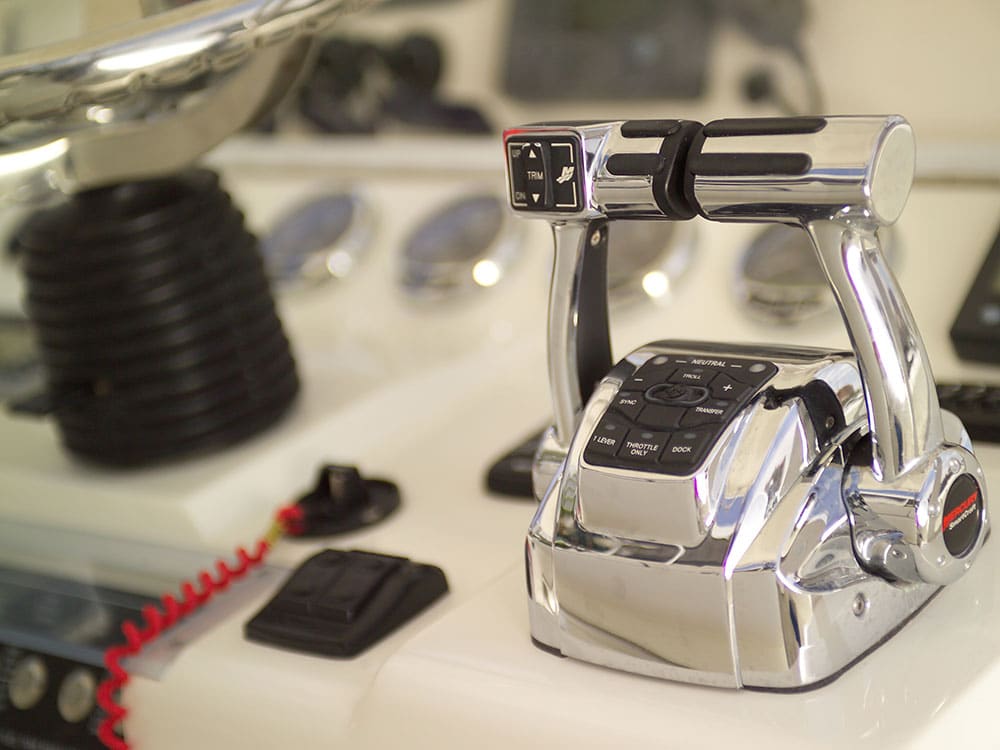
A new engine with drive-by-wire controls costs more than one with conventional throttle and shift. Yamaha’s F200 with electronic controls, for example, costs around 6 percent more than the mechanical version. What’s more, the drive-by-wire price does not include some rigging elements needed for electronic controls, including a binnacle and instrumentation. Unless you perform the rigging work yourself, labor costs for upgrading to a drive-by-wire motor will also increase versus retrofitting with a mechanical engine. That’s because the installing dealer needs to remove the old rigging and add new elements, such as a new control harness and sub-assembly cables, engine-control module, binnacle, ignition key and start/stop switch, and engine instrumentation.
Helm Changes
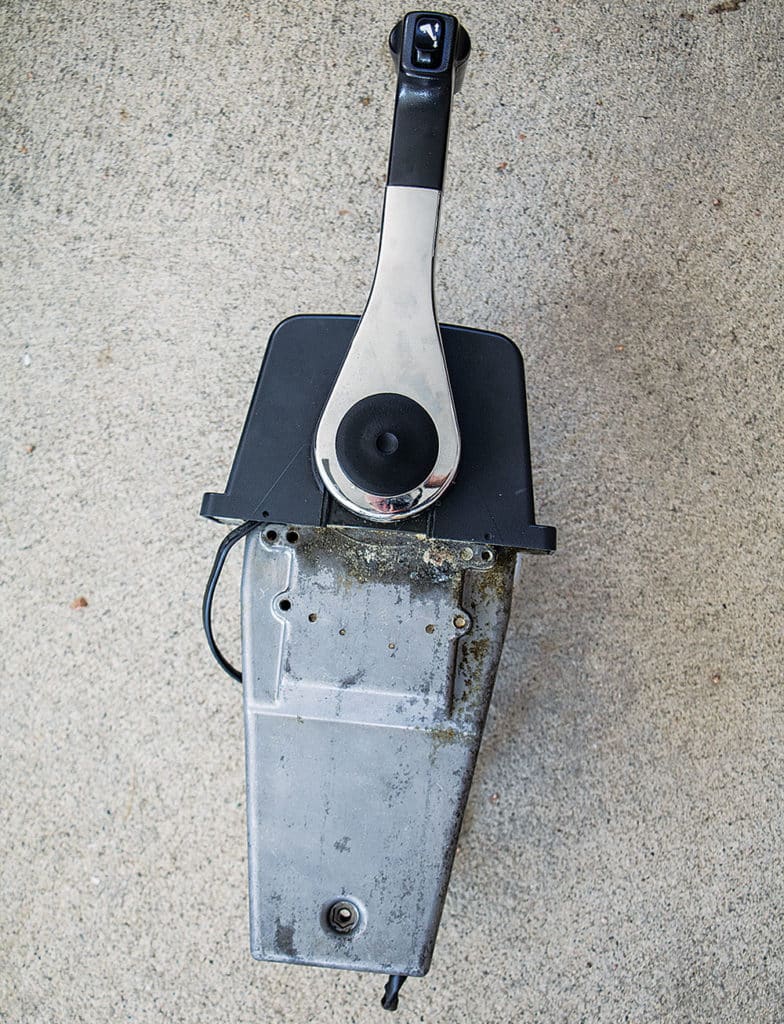
A re-power can grow into a larger project than you might have originally budgeted when switching to a drive-by-wire engine due to unanticipated complications. For example, there’s no guarantee that the footprint for the new binnacle will match the old one.
When the footprints do not match, it leads to fiberglass and gelcoat repair work to patch the old mounting holes. Also, newer all-in-one multifunction engine displays occupy a fraction of the space that old-school individual gauges required, often leaving a bunch of empty holes to fill in the dash.
Based on these possible complications, some boaters opt to stay with mechanical models when replacing aging outboards, thus eliminating much of the extra rigging costs. Usually, the new mechanical outboard will work with the existing harnesses, controls and instruments, provided you stay with the same brand of outboard.
Easier Operation
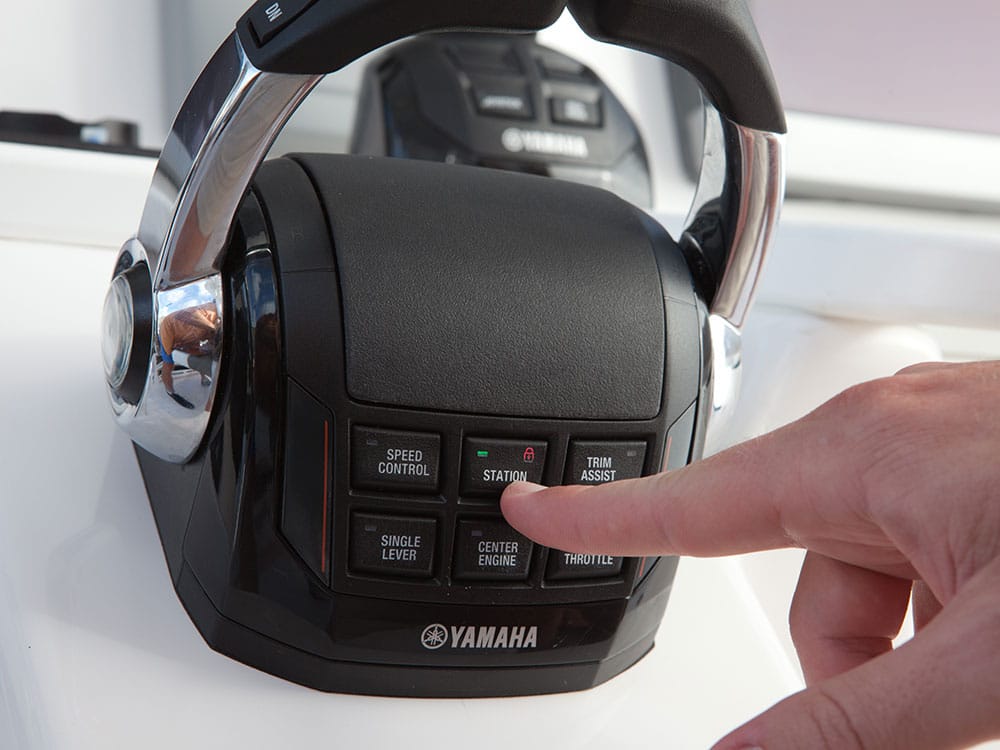
Shifting and throttle adjustments become silky smooth with electronic controls. That’s because there are no cables or complex mechanisms in the binnacle to bind up. Instead, electrical servos under the outboard hood respond to shift and throttle inputs.
At the press of a mere fingertip, you can advance the throttle from neutral to full throttle. It’s that sensitive; a marvelous tool in the hands of an experienced and attentive skipper.
For those who are uninitiated or more accustomed to mechanical controls with more stiffness in the levers, such responsiveness can result in abrupt acceleration and lurching, which becomes particularly hazardous in tight quarters, such as a crowded marina. It can also put unprepared crew members at risk. They can fall to the deck or, even worse, go overboard.
The smoothness also leads to a tendency to shift completely through the neutral position and into reverse when decelerating. That’s rough on the gears and propeller hub.
To mitigate these issues, manufacturers have incorporated tension adjustments into electronic binnacles. This lets you add friction to the control lever to help eliminate inadvertent and abrupt acceleration.
Multi-Outboard Features
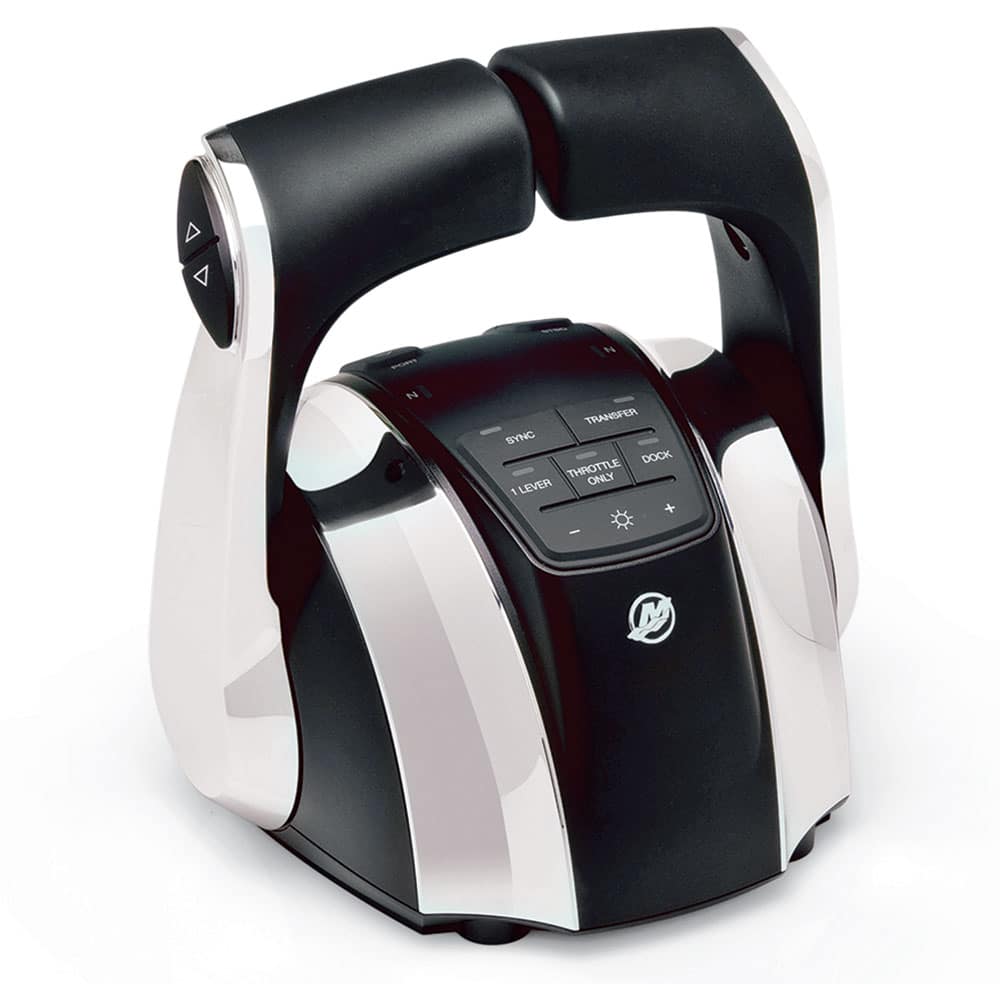
Electronic controls ease the task of running multiple outboards. With Mercury Marine’s Digital Throttle and Shift (DTS), for example, a press of a button on the control box lets you use a single lever for shift and throttle of up to four outboards. Another button on the DTS binnacle synchronizes the revolutions per minute for up to four motors.
Drive-by-wire systems also facilitate the addition of second helm stations in a tower. A second binnacle integrates with the electronic controls. A press of a button transfers control.
The advent of electronic controls has also led to new features, such as Suzuki Marine’s troll mode for fine adjustments in the lower-rpm range, using a rocker switch when slow-trolling.
The Evinrude Icon II and Yamaha Helm Master binnacles feature engine-speed controls that work like cruise control in an automobile. With the Yamaha system, once you reach your desired revolutions per minute, press the speed-control button to hold that velocity. Both systems let you throttle up or down in minute increments to fine-tune your speed for maximum fuel efficiency or achieve just the right -trolling speed.
Someday soon, the outboards -powering the vast majority of salt-water fishing boats will feature electronic throttle and shift. And ultimately, that’s a good thing. As I intimated at the beginning, once you experience this technology, you’ll never want to go back to the old cable controls again.
Joystick Capability
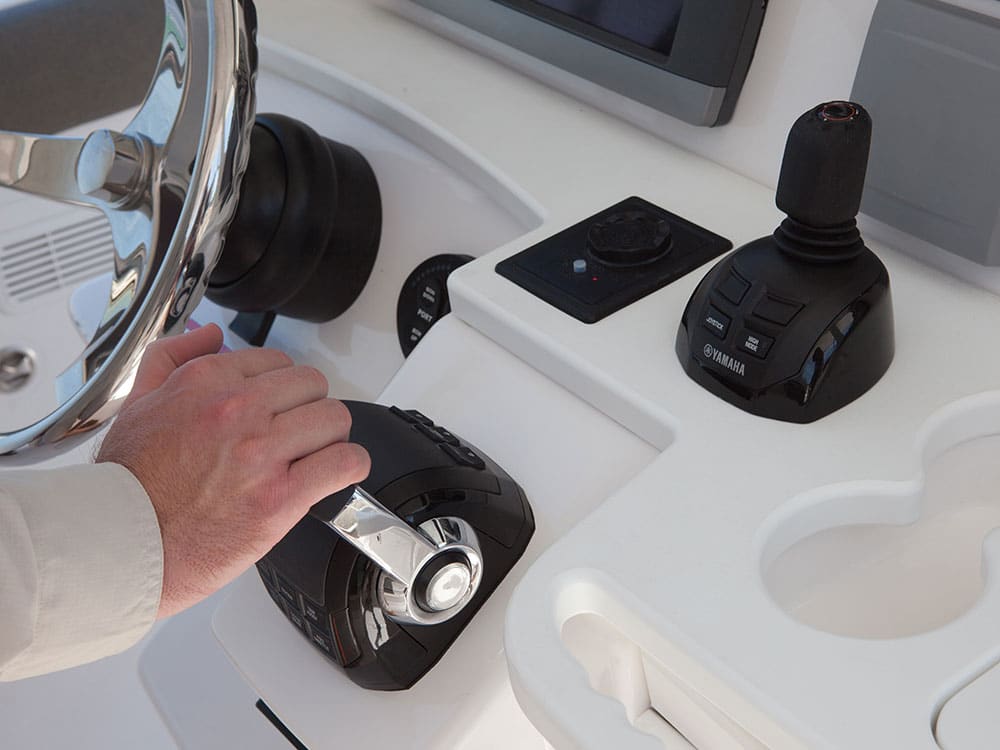
Electronic throttle and shift controls also make possible integrated joystick steering systems, some of which incorporate station-keeping features. The computer brains of systems such as Evinrude iDock, Mercury Joystick Piloting for Outboards, SeaStar Solutions Optimus 360 and Yamaha Helm Master appropriate the electronic throttle and shift, and combine it with independent outboard steering to point, pivot and move the boat in joystick mode.

